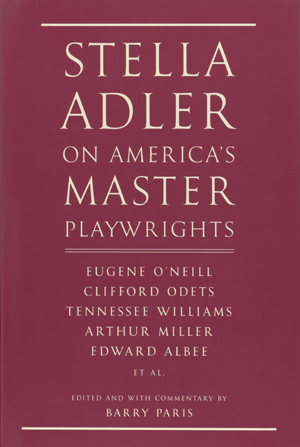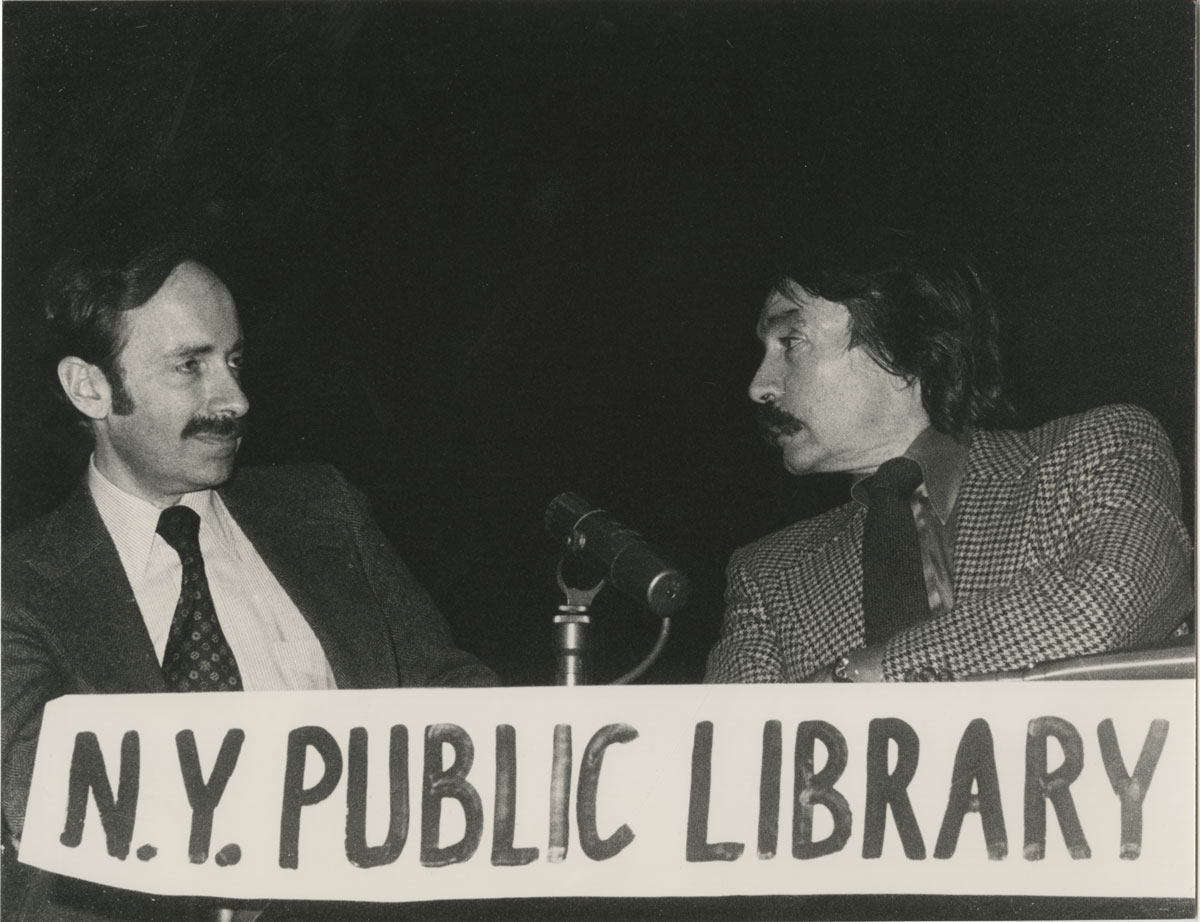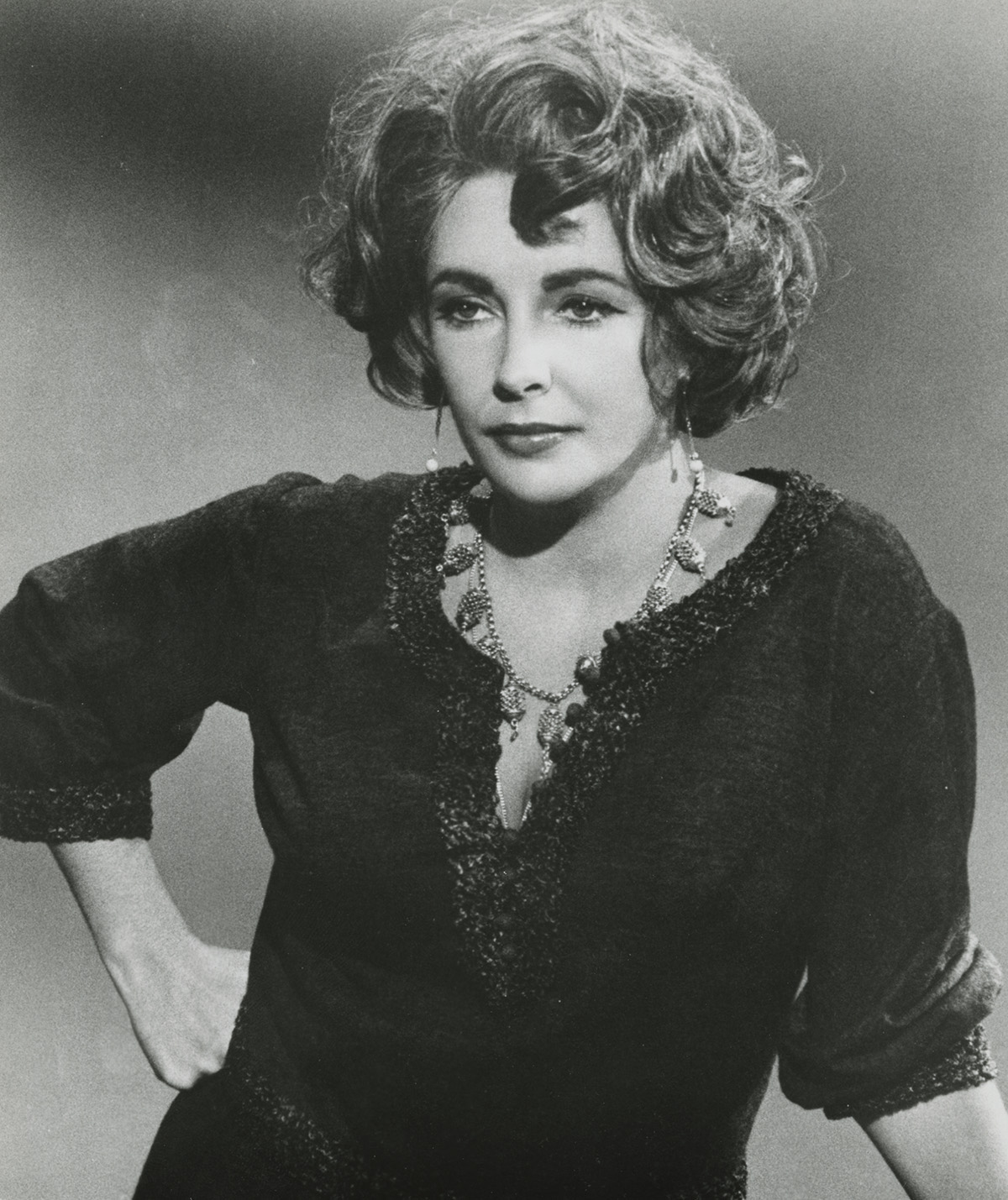The Council on Library and Information Resources (CLIR) has awarded the Ransom Center a “Recordings at Risk” grant for $24,600, supporting the project “Preserving the Interview Recordings of Mel Gussow, American and British Theater Critic.” The Ransom Center holds the Gussow (1933-2005) papers. [Read more…] about Mel Gussow’s interviews with actors, playwrights, writers, and directors to be digitized
Edward Albee
From the Outside In: Elizabeth Taylor’s publicity photo for “Who’s Afraid of Virginia Woolf?”
The atria on the first floor of the Ransom Center are surrounded by windows featuring etched reproductions of images from the collections. The windows offer visitors a hint of the cultural treasures to be discovered inside. From the Outside In is a series that highlights some of these images and their creators.
As Martha in Who’s Afraid of Virginia Woolf?, Elizabeth Taylor was hateful, tragic, flirtatious, shrewd, and still beautiful enough to be considered a faded beauty. All of these qualities are apparent in this dramatic publicity photo—it is difficult to imagine many American actresses today who would allow themselves to be filmed in such a harsh and ungenerous light.
The first time I saw the film (adapted from the play by Edward Albee), I had never heard of the screenwriter Ernest Lehman, and the only thing I knew about Elizabeth Taylor was that she was friends with Michael Jackson. Even on my tiny TV screen, the film shocked me with its brutality and the vitriol of two couples tearing each other apart over the course of a drunken evening. I was particularly struck by Taylor’s unflinching lack of vanity in her portrayal of Martha, a role for which the luminous 34-year-old gained 30 pounds and appeared to age 20 years. Albee’s original choices for the marquee roles were Bette Davis and James Mason, but director Mike Nichols and screenwriter Ernest Lehman fought to preserve the casting of Taylor and her then-husband Richard Burton. Lehman’s refusal to tone down the profane and explicit dialog only added to the controversy surrounding the film.
Ernest Lehman’s archive resides at the Ransom Center and figured prominently in the 2010 Making Movies exhibition. Lehman also had a hand in many other classic films, including the original version of Sabrina, West Side Story, The King and I, The Sound of Music, and the masterful North by Northwest, which he had written as an original story and screenplay for Alfred Hitchcock. The 2,500 items contained in the Lehman archive showcase the meticulousness of his work. We see not just screenplays but outlines and personal letters, scrapbooks, revisions of revisions, forays into journalism, photographs of Mount Rushmore (among other film locations), and a 200,000-word diary created during the making of Who’s Afraid of Virginia Woolf?. In addition, much of his work is handwritten, which provides a level of emotional access and authenticity for the reader that is not always afforded by typed manuscripts. Lehman’s decades-long career culminated in a 2001 honorary Academy Award (the first given to a screenwriter), but the richness of his creative process is what makes his archive a resource worth discovering.
Former Ransom Center volunteer Julie Liu wrote this post.
Stella Adler scholar explores acting master’s interpretation of great American playwrights

“Mommy, is that God?” a little girl once whispered to her mother as Stella Adler swept into a party in New York City. The girl’s mistake was understandable: Adler was known as a presence of divine proportions, a tall, glamorous woman whose grand gestures and dramatic one-liners captivated audiences both large and small. Adler began acting at age four in the “Independent Yiddish Art Company,” run by her parents, and continued her acting career until 1961. In 1931, Adler joined the Group Theatre, where she worked closely with Harold Clurman and Lee Strasberg.
In 1934, she went with Clurman to Paris to study with Constantin Stanislavski, an acting great famous for developing the Stanislavski System, a set of acting techniques that was tweaked by Strasberg and is known today as Method acting. Adler believed strongly that actors should use their imagination to synthesize characters, whereas Strasberg relied on emotional memory exercises, and the two eventually split over their differences. Adler left the Group Theatre and later opened her own acting school, The Stella Adler Studio of Acting, in 1949 in New York City, where she taught famous actors such as Marlon Brando and Robert De Niro. She opened another school, The Stella Adler Academy of Acting, in Los Angeles in 1985 with her friend and protégé Joanne Linville, who continues to run the school today.
The Ransom Center hold Adler’s papers, which were used extensively by Barry Paris in his book Stella Adler on America’s Master Playwrights (Knopf). The volume peeks into Adler’s classroom and explores the acting master’s take on American playwrights such as Eugene O’Neill, Tennessee Williams, Arthur Miller, Edward Albee, Clifford Odets, and others.
The book was put together using transcripts from Adler’s script analysis classes, where lively discussions of American culture, socioeconomics, and history fleshed out the context of the plays—a practice on which Adler placed the utmost importance. Adler once said of the great artists featured in the book: “these playwrights all saw what was wrong.” She believed it was imperative for the actor not only to bring personal experience to the role, but to truly understand the beliefs, prejudices, and lives of the playwrights who crafted the plays she taught. Peter Bogdanovich, one of Adler’s former students, praised the book for “bring[ing] back the sound of Stella’s unique voice and thought processes, as well as her own particular vision.”
Paris, the book’s editor, did extensive research in the Ransom Center’s holdings on Stella Adler and Harold Clurman.

